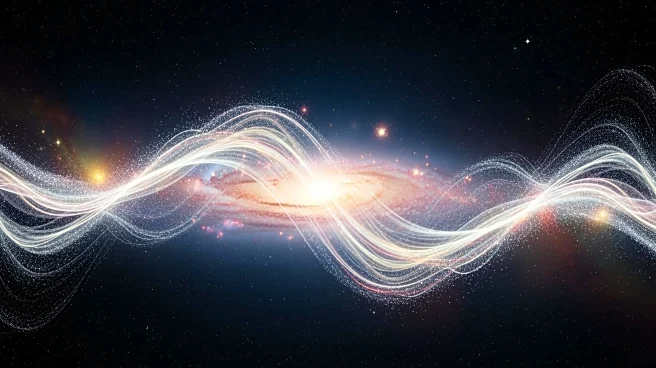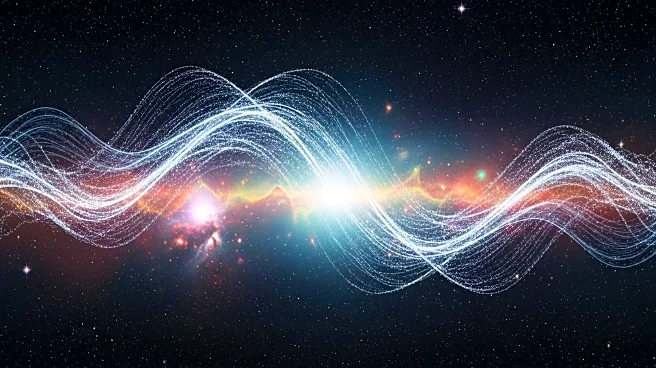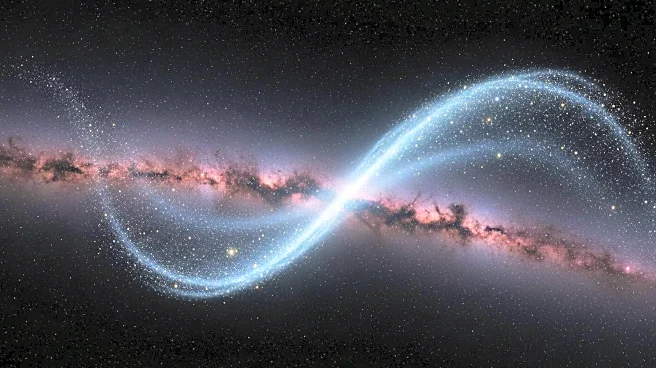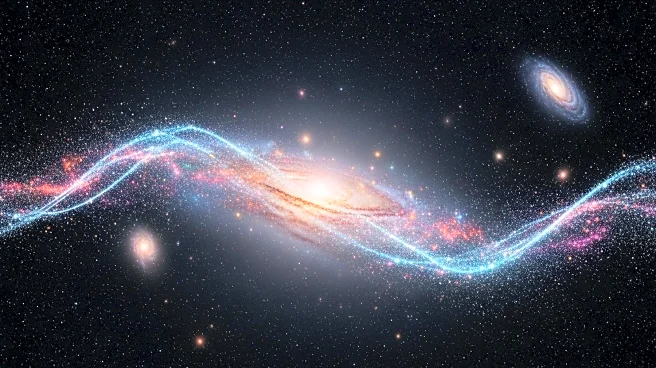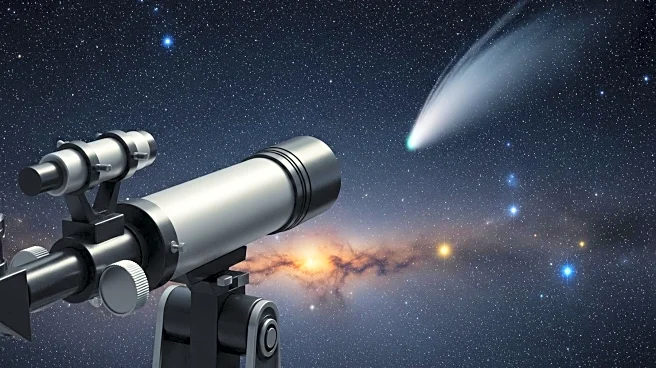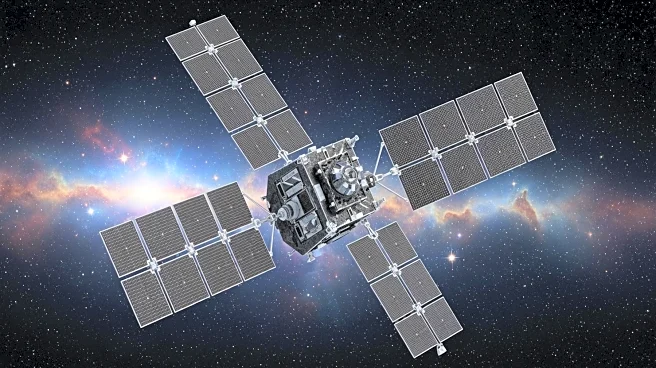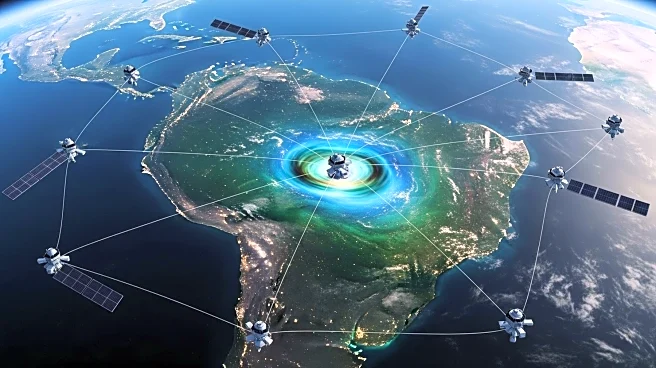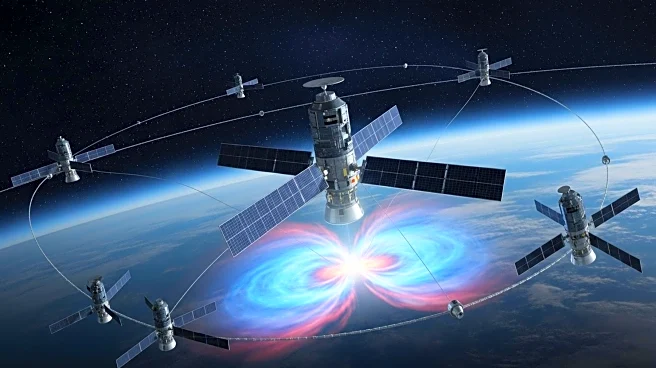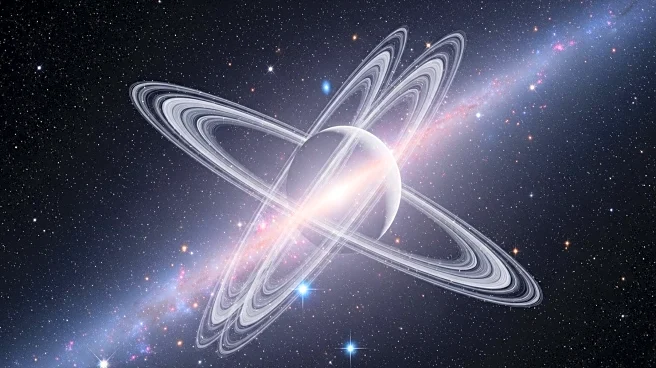What's Happening?
The European Space Agency's Gaia mission has discovered a massive wave rippling through the Milky Way galaxy. This wave, which stretches over thousands of lightyears, was identified using data collected
from nearly 2 billion stars. The wave begins at the galaxy's center and extends outward, affecting stars 30 to 65 thousand lightyears from the center. The discovery was made by analyzing the positions and movements of young giant stars and Cepheid stars, which are variable stars known for their brightness fluctuations. The wave's presence suggests it might be influencing cosmic gas within the galaxy's disc. The cause of this wave remains unknown, but one hypothesis is a past collision between the Milky Way and a dwarf galaxy.
Why It's Important?
This discovery is significant as it provides new insights into the dynamic nature of the Milky Way. Understanding the wave's impact on stars and cosmic gas could lead to advancements in astrophysics, particularly in the study of galactic structures and interactions. The wave's influence on young stars and cosmic gas may affect star formation processes, potentially altering the galaxy's evolution. Additionally, the findings could help scientists better understand the Milky Way's history and its interactions with other galaxies, offering clues about the universe's broader cosmic web.
What's Next?
Further research is needed to determine the wave's origin and its relationship with other known cosmic phenomena, such as the Radcliffe Wave. The upcoming fourth data release from Gaia will provide more detailed positions and motions of Milky Way stars, including variable stars like Cepheids. This data will enable scientists to create more accurate maps of the galaxy, enhancing our understanding of these wave structures. Continued study may reveal whether the wave is a result of external forces or internal galactic dynamics.
Beyond the Headlines
The discovery of the wave highlights the complexity of galactic structures and the potential for unknown forces shaping the universe. It raises questions about the Milky Way's stability and the role of cosmic interactions in galactic evolution. The wave's impact on star formation could have long-term implications for the galaxy's development and the distribution of cosmic matter.
